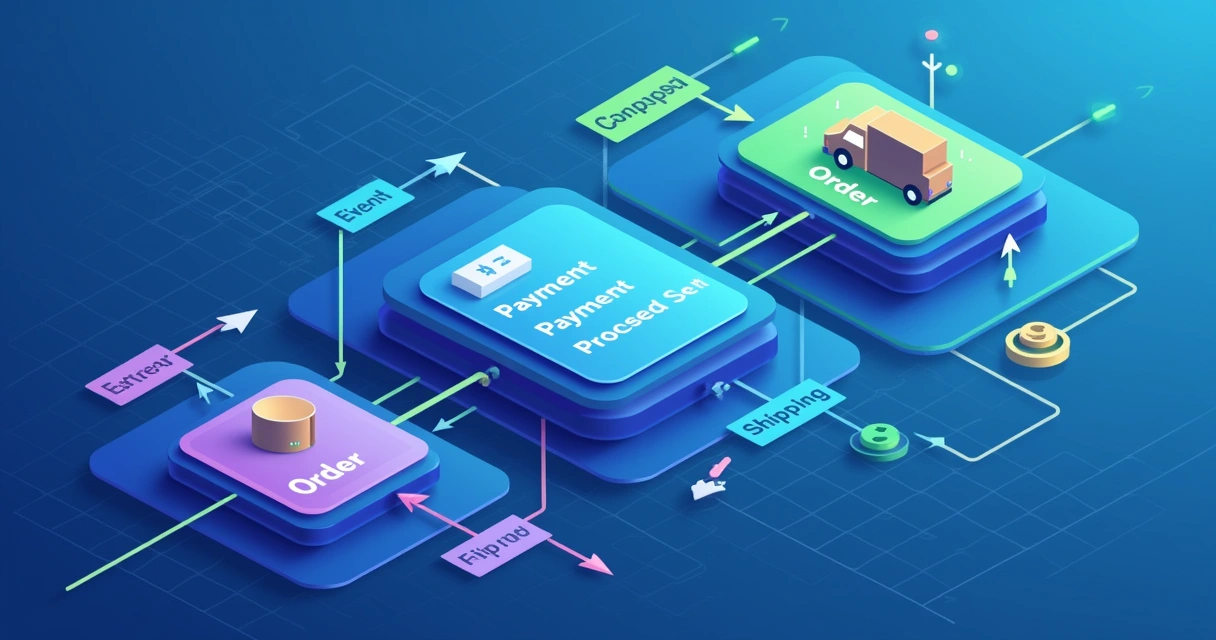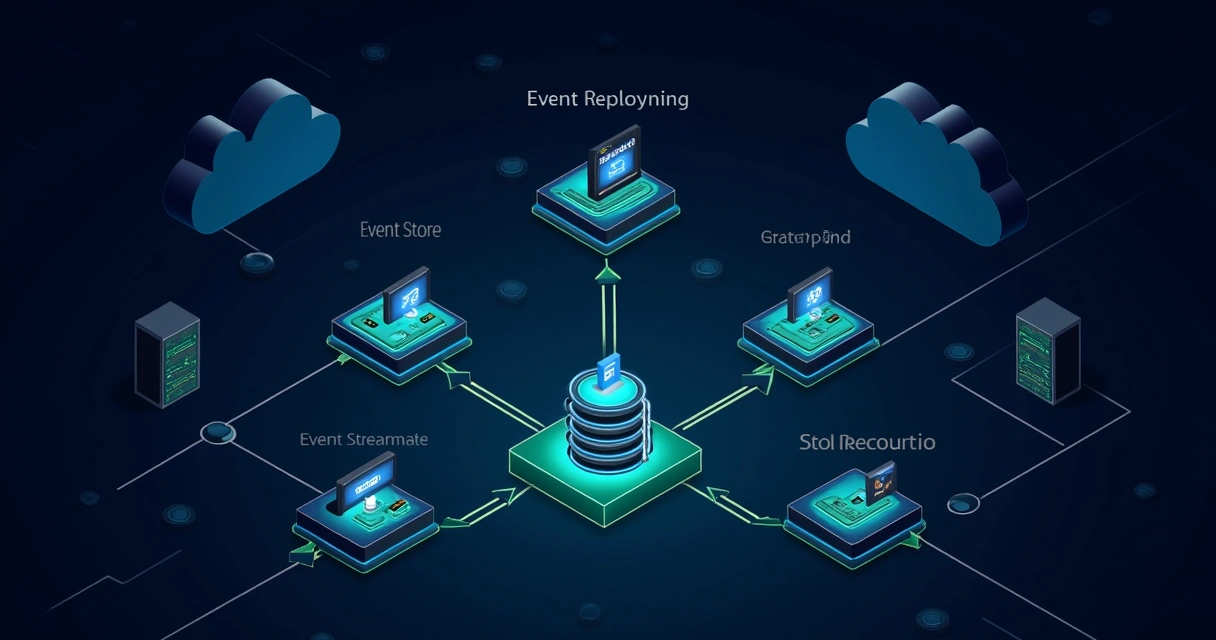Sometimes, when a system outgrows its old ways, it leaves artifacts all over—a mess of database records, scattered states, missed business steps. You wonder, “What actually happened?” That’s when event sourcing can quietly transform the way you build and think about microservices.
Imagine tracking every action, every state change, and never again piecing together history. Sounds enticing, right? The good news: it’s actually achievable. But getting there takes some honest effort, informed choices, and a practical guide. At Arthur Raposo, we bring hands-on examples and field-tested approaches for bridging Java / Spring Boot and event-driven architectures—the sort of advice you wish you’d found years ago.
What event sourcing really means
With event sourcing, you store every state-changing event as an immutable fact. Instead of simply keeping the latest values, you record each event—from order placement to shipment. Your current state? It’s always just a projection, built by replaying the event history.
Events are forever; states are temporary.
A typical service, say in Spring Boot, might update a customer’s balance by directly changing its value in a table. But with event sourcing, you’d write an AccountCredited or AccountDebited event. Later, if you ever need to know why a balance is what it is, or roll back a mistake, you simply replay these events.
Key characteristics:
- Events are the source of truth, not the state.
- Events are immutable; you can add new ones, but never change the past.
- Replaying all events reconstructs your system’s state.
- Auditing, debugging, or compliance? Instantly possible.
But there’s a catch. Event sourcing isn’t just a new code style—it reshapes how you store, process, and reason about system behavior.
How does this look in microservices?
Microservices, by nature, are autonomous and mostly responsible for their own data. Coordinating changes becomes tricky, especially when multiple services need to stay in sync.
Event sourcing shines because it turns these changes into consumable facts. Services publish meaningful events; others subscribe, react, maybe even build their own projections.

It sounds simple—but the reality is more complex. An empirical study published in August 2024 found developers battle with large event payloads, handling audit and flow, and—perhaps most tricky—maintaining order in event processing when services rely on eventually consistent data.
Design principles that keep your event sourcing sane
There’s no one-size-fits-all answer. But years of battles (and a few scars) suggest a shortlist of practical principles, especially for microservices built with Java or Python as at Arthur Raposo.
- Name your events wisely. Pick names that describe what actually happened, not commands or intents. For example, OrderPlaced rather than PlaceOrder.
- Capture enough context, but not too much. Each event should have just enough data for consumers to act. But if you pack in everything, event payloads grow unwieldy and brittle.
- Immutability is non-negotiable. An event is a contract with the past—you don’t change it, period.
- Version events. As features change, event schemas will need to evolve. According to a 2024 report, nearly half of teams tangled with versioning issues in event-driven architectures.
- Idempotency matters. Make event handlers tolerant to duplicates. If processing an event twice causes mayhem, fix the handler.
From the ground up, thoughtful design like this saves a world of trouble. If you’re already thinking about domain-driven design or hexagonal architecture, as we do at Arthur Raposo, these patterns fit right in.
Step-by-step: applying event sourcing in your microservices
Biting off event sourcing all at once can be daunting. Start with a pilot in a well-bounded service before rolling out platform-wide.
- Pick your aggregate. Start with a core business concept, like Order or Account. Focus on areas where you need auditing, workflows, or state recovery.
- Model the event stream. Map every state change as a specific event. Design the sequence: what comes first, what can repeat, what follows what.
- Choose an event store. Pick a storage engine (like EventStoreDB, Postgres with append-only tables, or Kafka as a log). Careful design is needed—support atomic writes of multiple events, and ensure consistency and persistence.
- Create projections. Build read models that are optimized for querying—these are your views on the data (like order history, account balances, etc.). Keep them loosely coupled, rebuilt from events.
- Publish to the outside world. Use event buses (Kafka, RabbitMQ) to share events across services. Make sure consumers can catch up at their own pace.
- Monitor and measure. Track event throughput, latency, and resources. Maintain logs for replay and diagnostics. Snapshotting helps speed recovery by injecting checkpoints.
Start small. Win trust. Grow from there.
Making it work in production
I’ve seen teams burn days tracking phantom bugs, only to realize an event was lost or duplicated. How to avoid getting lost in the event storm?
Monitoring matters. Set up full logging on your event stream, and follow a reliable message broker strategy with acknowledgments, retries, and error queues. Make handlers idempotent—they must produce the same outcome if an event is processed multiple times, no matter what.

Lastly, be mindful of data growth. Events never disappear, so introduce snapshotting and pruning early. This prevents slow recoveries and ballooning storage.
Who should use event sourcing?
Not every service needs it. If your data is simple, or changes rarely, it’s probably overkill. But for use cases with lots of changing state, demand for audit logs, or complex workflows—think financial systems, logistics, healthcare—event sourcing opens doors.
And if you aim for seamless integration of AI into your backend, as we do at Arthur Raposo, event replay gives a goldmine for machine learning, anomaly detection, or automated audits.
Wrapping up
Event sourcing isn’t a magic fix. It requires changes in how you think, design, build and debug. But when you need traceability, reliable workflows, and robust state management in distributed services, there’s little that matches its capabilities—if you do it thoughtfully, step by step.
Every event tells a story. Listen carefully.
Curious to see it in practice? Check out Arthur Raposo for detailed, code-heavy guides and to join a hands-on community building tomorrow’s cloud-native backends together. Bring your questions or your own war stories—let’s learn from each other.
Frequently asked questions
What is event sourcing in microservices?
Event sourcing is a pattern where every state-changing event within a service is stored as an immutable log. Instead of saving just the final state, the system stores all changes—every fact, every decision—that led to the current situation. In microservices, this helps track distributed activities, enables state recovery, and supports audit needs. It also powers eventual consistency across separate services.
How to implement event sourcing step-by-step?
Start by selecting a core aggregate (like Order or Inventory). Then, define all the possible events that represent state changes. Next, select a reliable event store (EventStoreDB, Postgres, Kafka, etc.), and record each event. Build projectors to create views from the event stream. Use an event bus for cross-service communication. Monitor performance closely, including logging and snapshotting. Version your events as changes occur and follow good practices such as idempotent event handling and meaningful event names. Many of these steps are explained in guides throughout Arthur Raposo, grounded in real project experience.
Is event sourcing worth it for every service?
Not always. It shines in domains where traceability, auditability, or replaying state is needed—like finance or logistics. For simple CRUD or static data, the extra work may not pay off. Consider your needs: if you need rich history, rollbacks, or handle distributed workflows, event sourcing will bring value. Otherwise, it may add more complexity than payoff.
What are the main challenges with event sourcing?
Real-world use brings hurdles. Challenges include managing evolving schemas (versioning events), keeping event payloads manageable, ensuring reliable delivery, and handling the order of events. A recent large-scale study found that developers often struggle with schema design, large events, and keeping distributed systems in sync. Monitoring, debugging, and scaling the event store also require continual attention.
How can I migrate existing systems to event sourcing?
Migration can be gradual. Begin by applying event sourcing to new bounded contexts, or by wrapping legacy writes in new services that emit events. Slowly add projections until you can shift reads and business logic away from the old state-based models. During the transition, maintain dual writes (carefully managed), or build adapters to ensure the event stream reflects the legacy state. Eventually, retire old storage once enough confidence is built. In short, migrate incrementally, validate often, and keep both systems in sync until the new foundation is proven stable.




Leave A Comment